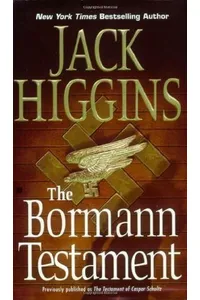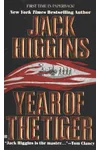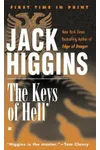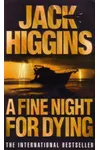Step into the shadowy world of Paul Chavasse, where Cold War espionage meets heart-pounding thrills! Created by Jack Higgins, this gripping series follows a suave British spy navigating a treacherous landscape of secrets, danger, and global intrigue. With his sharp mind and multilingual charm, Chavasse is the ultimate 1960s secret agent, blending academic finesse with gritty action.
Unlike the gadget-laden James Bond, Chavasse relies on wit, resilience, and a knack for languages to outsmart foes. From Nazi conspiracies to space race sabotage, his missions capture the pulse of a divided world. Let’s dive into the origins, adventures, and lasting allure of this classic espionage saga!
How Paul Chavasse Began
Jack Higgins, the pen name of Harry Patterson, introduced Paul Chavasse in 1962 with The Bormann Testament. A former soldier and teacher, Higgins drew on his experiences and the 1960s espionage craze—sparked by Ian Fleming’s James Bond—to craft a grounded yet thrilling hero. Chavasse, a Franco-British academic turned spy, emerged as a response to the era’s fascination with covert operations, reflecting Cold War tensions and superpower rivalries.
Higgins’ knack for fast-paced narratives and morally complex characters set Chavasse apart. Published initially under pseudonyms like Martin Fallon, the series gained traction as Higgins’ fame grew, especially after his 1975 blockbuster The Eagle Has Landed. The Paul Chavasse novels, spanning the 1960s, became a staple for thriller fans craving authentic espionage tales.
The Heart of Paul Chavasse
The series comprises six novels, each plunging Chavasse into high-stakes missions. In The Bormann Testament (1962), he hunts a dangerous manuscript in Germany, dodging Nazi remnants with Israeli allies. Year of the Tiger (1963) sees him infiltrate Chinese-occupied Tibet to rescue a scientist pivotal to the space race, blending rugged terrain with political intrigue. The Keys of Hell (1965) follows Chavasse smuggling intelligence across the Adriatic, while A Fine Night for Dying (1969) pits him against a cross-channel smuggling ring after a gangster’s murder.
Themes of loyalty, sacrifice, and moral ambiguity run deep. Chavasse’s academic background and linguistic prowess—jokingly said to outnumber ‘hot dinners’—add flair to his gritty determination. Set against Cold War backdrops like Tibet, Albania, and Germany, the series captures the era’s paranoia and ideological clashes. Higgins’ style, laced with British humor and taut action, keeps readers hooked, balancing pulse-pounding chases with introspective moments.
Unlike Bond’s glamour, Chavasse’s world is raw and human. His flaws—botched missions, physical and emotional scars—make him relatable, while his resilience mirrors the era’s stoic heroism. The series’ exotic settings and political ploys immerse readers in a time when global dominance hung in the balance.
Why Paul Chavasse Resonates
The Paul Chavasse series carved a niche in espionage fiction, offering a grittier alternative to Bond’s polish. Its influence lies in its authenticity—Higgins’ military background and knack for humanizing spies gave Chavasse depth, inspiring later authors like John le Carré. Fans on platforms like Goodreads praise the series’ relentless pace and historical immersion, even if some critique its dated tropes or Chavasse’s occasional missteps.
Though less iconic than Higgins’ later works, the series endures for its vivid portrayal of Cold War stakes and Chavasse’s enduring appeal as a flawed yet fearless hero. Its compact six-book run makes it a hidden gem for thriller enthusiasts seeking a quick, immersive dive into 1960s espionage.
- First Book: The Bormann Testament (1962)
- Last Book: A Fine Night for Dying (1969)
- Total Books: 6
- Author: Jack Higgins (pseudonym of Harry Patterson)
Ready to unravel Cold War secrets? Grab The Bormann Testament and join Paul Chavasse in a world of spies, danger, and daring missions!





